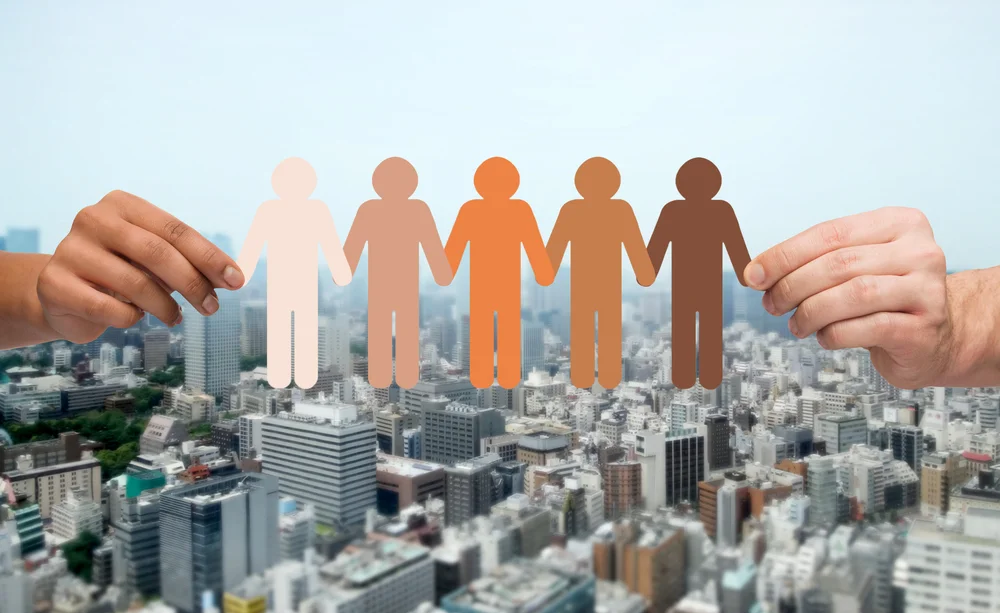This article was published on population.sg on 8 September, 2016.
By Viswa Sadasivan
A Personal Reflection on the Past – why CMIO was necessary
On the 23rd of March, 2016, I attended the Gala Premiere of Jack Neo’s movie, “Long Long Time Ago 2”. The film captures Singapore in the 60s and early 70s, and made me laugh and tear in poignant reflection.
For me, the film accurately portrayed the Singapore of the past. It didn’t just praise the country’s history, but also focused on getting the audience to know Singapore better, warts and all, as a starting point of our journey as a nation. In particular, the film served as a reminder of how life, especially for an ethnic minority citizen like myself, could have been rough if Singapore started on a very different foundation where primal communal instincts were allowed to overbear shared interests.
There was one scene that was particularly powerful and accurately reflected how Singaporeans previously were steeped in their ethnic-cultural ways and were acutely aware of their differences:
The film is centered on a typical Chinese family and in this scene, the family was preparing to have a meal together. The father, mother, son, daughter and their respective children were all at the dining table and were happily bantering in Hokkien. However, their conversation stops when the father’s youngest son appears in the doorway with a beautiful girl next to him. The presence of the girl startles the family, not because the young man brought his girlfriend home, but because she was Indian.
The family’s reaction was not a result of racism, but a result of discomfort arising from physical and cultural differences. Although two of the older family members made snide remarks in Hokkien, and the father stated that he didn’t understand the “Indhuzhen” (Indian) way of thinking, as an Indian by ethnicity, I didn’t find these comments offensive or racist at all. Instead, these were exasperated responses from an older generation, who struggled to follow the logic of someone from a different culture.
A story of interracial romance, and the discomfort that ensues in "A Long Long Time Ago 2" (Image credit: Golden Village Pictures)
This scene made me recall life in the 1960s and early 70s when Singaporeans were steeped in our own ethnic-cultural ways and were acutely aware of the differences. Yet, bonds of friendship and comradeship also existed between the different cultures, which were perhaps strengthened because of shared suffering that allowed us to look beyond our physical differences.
A particular example of this comradeship is my own friendship with my Chinese and Malay friends. Back then, my friends and I would poke fun of each other’s cultural and religious practices, based on what we heard at home. We even went as far as calling each other names, which would be considered racial slurs today.
In the earlier years, when primordial instincts focused on ethnic and religious identity, “rules of engagement” were required to facilitate peaceful cohabitation, to provide a sense of security for the minority communities, and to enhance intercultural ties.
My friends called me “mama”, which is a Tamil word for uncle, or “klingkiah, which refers to Kalinga – an ancient Indian republic and the origin of many South Indian immigrants. I would call my Chinese friends “cheena”, and my Malay friends “M’ad”. There was no offence taken – these were simply terms of endearment. At times, we ended up having fistfights, but our friendship remained, and these occasions allowed us to clear up misperceptions, and better understand each other and our cultures.
At that young age, my friends and I took pride in our own ethnic identities. Yet, we also developed a healthy respect for each others’ cultures and even partook in them.
Yes, this was how it was “long long time ago”, and since then we grown closer together as a society and a nation.
This interracial cohesiveness and our sense of common destiny entrenched in our psyche was no small feat accomplished by Lee Kuan Yew and the founding leaders of our country. Their belief in and commitment to higher values – integrity, meritocracy, hard work – helped us look beyond our primal instincts predicated on race, language and religion. The National Pledge that stresses “regardless of race, language or religion” has served as our “Bill of Rights”.
Is CMIO still relevant?
Today, Singaporeans co-exist peacefully while maintaining their cultural and religious identities. However, does this social cohesion hinge on CMIO, or can it be based in inclinations to seek bonds that transcend ethnic or religious affiliations?
For me, it is both. In the earlier years, when primordial instincts centered mainly on ethnic and religious identity, “rules of engagement” were needed to facilitate peaceful cohabitation, provide a sense of security for the minority communities, and enhance intercultural ties. This is when the CMIO (Chinese-Malay-Indian-Others) policy came into play – with the objective of building a cohesive society, while still allowing Singaporeans to preserve the ethnic-religious basis of their identities. This “mosaic” approach is clearly more challenging than the “melting-pot” approach adopted by countries such as the USA, but it was a choice that we made as a people, and we persevered to make it happen.
Today, with the benefit of 50 years of living together in independent Singapore, does it still make sense to have CMIO as a central basis for organising society? Does identity remain rooted in ethnic-religious affiliation, or does the Singaporean identity have primacy?
The reality is that Singapore today is starkly different from the Singapore portrayed in “A Long Long Time Ago 2”. For one, Singaporean’s aren’t likely to be startled if their family member came home with a girlfriend of a different ethnic background and in fact, multiracial couples are not an anomaly today.
Most Singaporeans go through a common education system with English as the core language, and value meritocracy and hard work. We have learned how to share common space with tolerance and accommodation, and disapprove of racism and discrimination, at least in principle. This is progress, because we have attained this without having to compromise ethnic or cultural identities. It is an an acknowledgment that state policies have worked. It is a celebration of the basic human instinct to seek shared interests across ethnic, religious and cultural boundaries. As a society, it is important to acknowledge this achievement, and not be tentative about it.
CMIO in Singapore Today
A society that goes beyond CMIO – the next stage in Singapore’s metamorphosis?
However, the time has come for us to review CMIO. As a core policy, it served Singapore well in the past, but may not be as useful, relevant, and may even be counterproductive for Singapore today.
The review of CMIO must be executed with an open mind. Reviewers can’t be fixated on how the policy served Singapore well in the past when considering how CMIO should be applied today.
I am not suggesting that we throw out CMIO completely. What is needed is a review and a re-calibration of how we apply it.
Continuing to emphasise CMIO may prevent citizens from thinking of themselves first and foremost as Singaporeans. It could result in excessive racialisation, which may lead to overt or subtle ethnocentrism and even racist tendencies.
CMIO could entrap us in a mindset that justifies race-driven policies, and make it necessary for to continue to have ethnic based self-help groups, Special Assistance Plan (SAP) schools and Group Representative Constituencies (GRCs). As our society is matures to look past cultural and religious differences, CMIO could become a crutch that holds back progress towards multiculturalism.
This mindset will also prevent us from being sensitive to the negative implications of a race-based approach – for example, the unintended perception that one should seek help primarily from your own ethnic community.
Lastly, now that Singapore is more cosmopolitan, especially with the influx of foreigners, and English as the lingua franca, does it still make sense for us to continue to organise ourselves on the basis of CMIO?
Hard Questions to review CMIO
For an effective review of CMIO, we need to ask with honesty, these hard and inconvenient questions:
Do Singaporeans today vote for national leaders based on ethnicity, or based on ability and acumen?
Are we ready for a non-Chinese Prime Minister? Does it matter if the President is Malay, Chinese, Indian or Eurasian? Or is it more important for the President to be someone who inspires respect and connects with us as the leader of our nation?
Do ethnic-based self-help organisations, such as Mendaki and SINDA, encourage a racial mindset that could unintentionally hinder efforts to build a cohesive society “regardless of race, language or religion”?
With the looming threat of terrorism, isn’t it more important for Singapore to shift away from the polarising factors, towards friendship and kindship ties that transcend racial and religious boundaries?
The review of CMIO must be executed with an open mind. It must put aside any historical or emotional attachment to a policy that has served Singapore well. This review must have integrity of intent.
Lee Kuan Yew was a pragmatist. He said:
“I did some sharp and hard things to get things right. Maybe some people disapproved of it. Too harsh, but a lot was at stake and I wanted the place to succeed…”
This shows the defining quality of Mr Lee as a leader – he did not waver from doing what is right by Singapore and Singaporeans – even if meant dropping a policy that may have been close to his heart.
Singapore is at a point of inflexion. Do we have what it takes to do the right thing?



